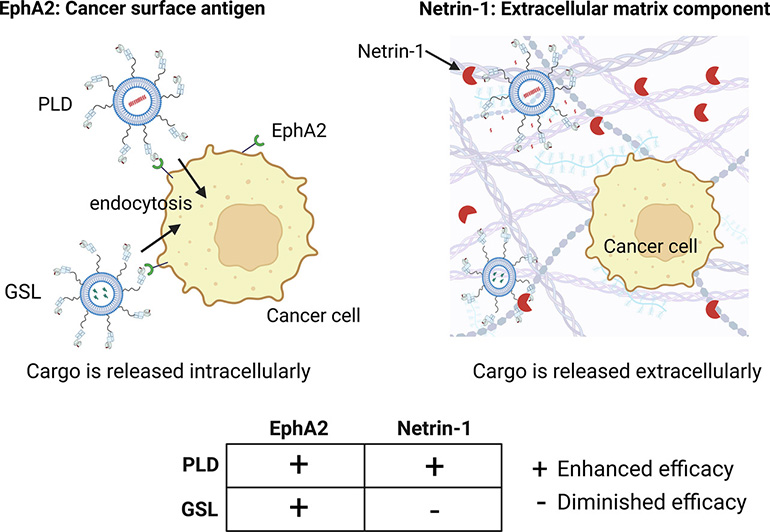
 中央研究院 生物化學研究所
中央研究院 生物化學研究所
Targeting nanocarriers to tumors to increase their therapeutic efficacy requires selection of appropriate cancer targets and may depend on the particular formulation under investigation. Here, we compare the effectiveness of targeting PEGylated liposomal doxorubicin (PLD) or glycosidic switch liposomes (GSL) formulated with a glucuronide prodrug of 9-aminocamptothecin to ephrin receptor A2 (EphA2) present on the membrane of cancer cells or netrin-1 present in the tumor extracellular matrix. Targeting PLD to EphA2 or netrin-1 with bispecific PEG engagers significantly decreased the IC50 value of PLD from 1.94 μM to 0.65 μM for Netrin-1 and 0.31 μM for EphA2 after 2 h. Targeting EphA2 decreased the IC50 value of GSL from 38.2 μM to 1.73 μM, but targeting netrin-1 significantly increased GSL IC50 to 49.9 μM after 2 h. Premixing PEGylated liposomes with PEG engagers targeting either EphA2 or netrin-1 significantly increased uptake of liposomes in HCT116 tumors in NOD-SCID mice. PLD targeted to EphA2 or netrin-1 significantly extended the mean survival times of NOD-SCID mice bearing HCT116 tumors from 54 days for untargeted PLD to 64 days for Netrin-1 and 80 days for EphA2. GSL targeted to EphA2 significantly extended mice survival to 64 days as compared to 51 days for untargeted GSL but targeting netrin-1 significantly reduced the survival of mice bearing HCT116 tumors to 42 days. Our results indicate that targeting the extracellular matrix can increase the antitumor activity of some nanomedicines, but that careful selection of compatible nanomedicines is necessary.
